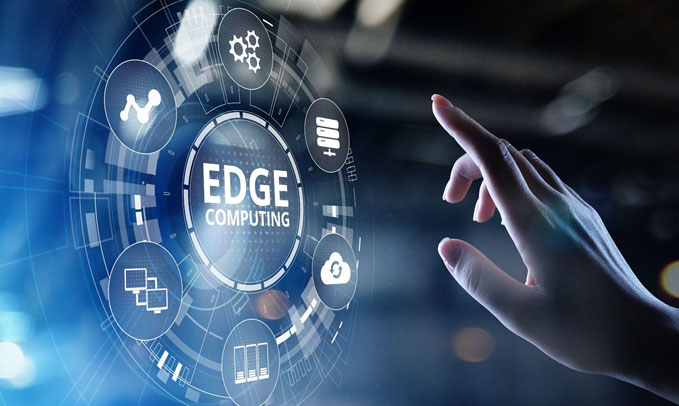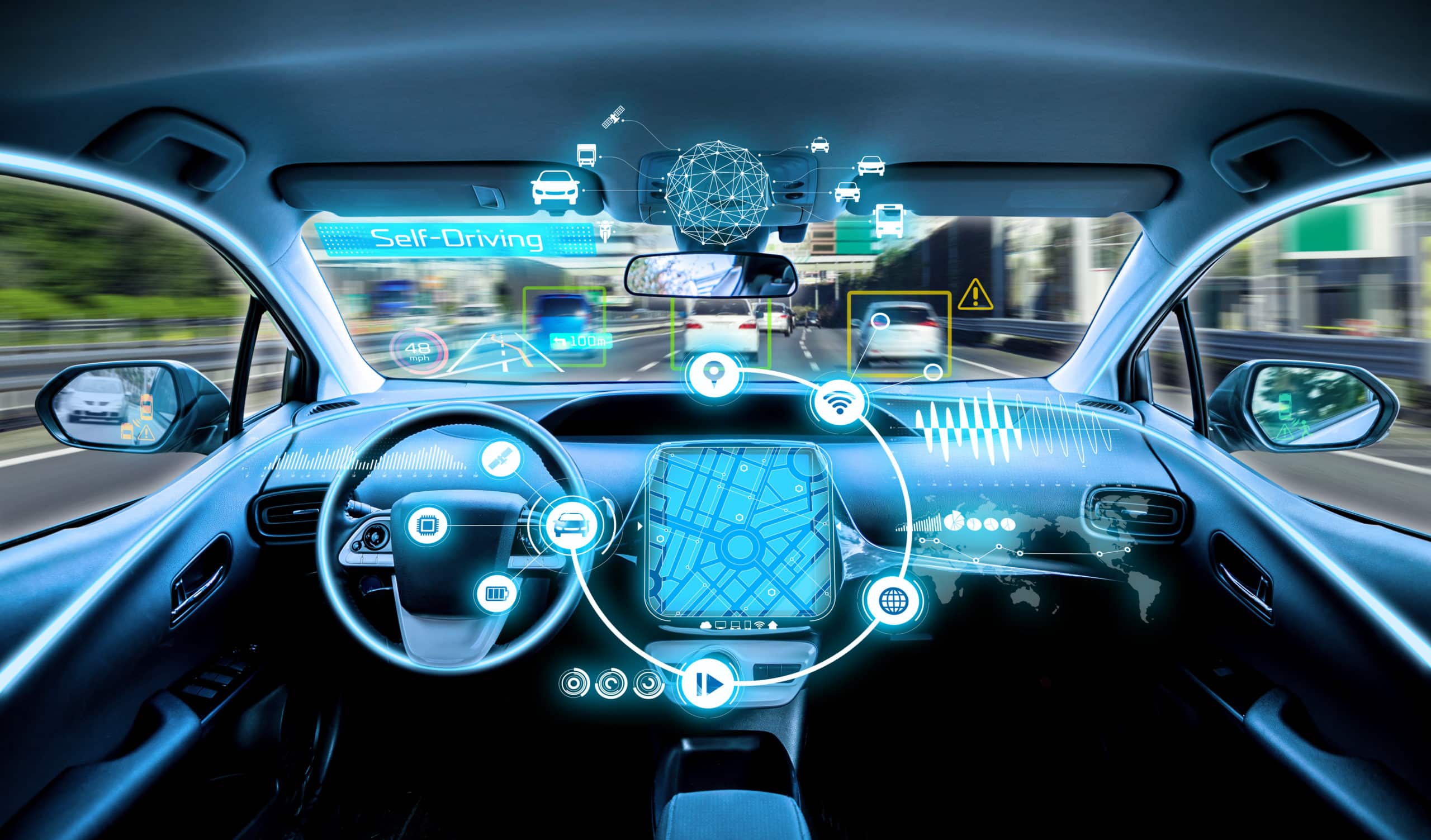What is Edge Computing?
Edge computing is a distributed computing model that brings data processing closer to the data’s source (at the “edge” of a network), minimizing latency by reducing the need for data to be sent to a central data center. By allowing Internet of Things (IoT) devices to process data locally, edge computing enhances speed and efficiency in real-time data processing.
Edge Cloud Computing Explained
Edge computing allows devices in remote or decentralized locations to handle data processing closer to the source, either directly on the device or through a nearby server. When necessary, only critical data is sent to a central cloud or data center for further analysis, reducing the amount of information transmitted and helping to minimize delays.
Why Do Businesses Use Edge Computing?
- Improved Response Times: Edge computing reduces latency by processing data locally, helping businesses make real-time decisions and avoid network bottlenecks.
- Increased Efficiency: By offloading data processing from centralized servers, it prevents the overwhelming of networks with large data from IoT devices, increasing speed and reducing costs.
- Critical for Real-Time Data: In industries like manufacturing, retail, and healthcare, edge computing ensures real-time data processing, which is essential for improving worker safety, customer experiences, and operational efficiency.
Edge Cloud Computing
Edge cloud computing refers to the same concept as edge computing, where smart devices process and make decisions locally, reducing the need to depend on a central server. This leads to faster response times and reduced latency.

click here to know more about this topic
Edge Computing Technology
- Hardware & Networking: It uses a mix of hardware and networking technologies, such as IoT devices, local servers, and AI processors, to manage data locally. Technologies like 5G help minimize latency, making edge computing scalable for widespread use
- Components:
- Edge Devices: Smart devices like cameras, sensors, drones, and robots with local processing abilities.
- Gateways: Edge servers that manage wireless connectivity, firewalls, and data processing.
- Routers & Switches: Ensure network connectivity and data transmission across devices.
Key Use Cases of Edge Computing
- Manufacturing: IoT sensors monitor machinery in factories, improving safety and preventing costly delays by providing real-time data analysis.
- Retail: Smart systems in retail spaces track customer behavior, monitor stock levels, and improve inventory management.
- Healthcare: E.C. allows healthcare devices like heart monitors to process and transmit only essential patient data in real time.
- Agriculture: IoT sensors in farms measure soil moisture and weather conditions, helping optimize water usage.
- Energy: Remote sensors monitor utility grids or wind farms, improving efficiency and reducing maintenance costs.
How Edge Computing Works
Edge computing solves three key challenges:
- Remote Device Connectivity: Ensures reliable network connections for devices in distant locations.
- Latency in Data Processing: Processes data locally, reducing the lag that occurs when transmitting data to distant servers.
- Bandwidth Strain: Minimizes network load by sending only important data to the cloud, avoiding data transmission bottlenecks.
Edge Computing Hardware
It requires durable and reliable hardware that operates in extreme conditions. Key characteristics include:
- Fanless & Ventless: Sealed to protect against dust, moisture, and debris.
- Temperature Resistant: Designed for harsh environments, such as outdoor or underwater settings.
- Shock & Vibration Resistance: Built to endure mechanical shocks and vibrations from machinery.
- Compact & Portable: Built to fit into small spaces with ample storage for local data processing.
- Security Features: Includes firewalls and tamper-resistant features to secure remote devices from cyber threats.
Benefits of Edge Computing
- Improved Operational Efficiency: Processes data close to where it’s generated, reducing delays and improving system performance.
- Faster Response Times: Allows immediate response to critical incidents, such as equipment failures or security breaches, by reducing network latency.
- Enhanced Workplace Safety: Monitors equipment in real time, helping to prevent accidents in dangerous environments like oil rigs.
- Better Functionality in Remote Locations: Useful in areas with limited connectivity, ensuring devices continue to function even with intermittent network access.
- Lower IT Costs: Reduces expenses associated with cloud storage and data transmission by filtering unnecessary data at the source.
Example of Edge Computing in Action
A security camera at a remote warehouse uses AI to identify suspicious activities and transmits only relevant footage to the central data center, reducing bandwidth consumption.
Edge Computing Services
Edge computing services support:
- AI and analytics at the edge.
- Consolidation and management of large volumes of edge data.
- Remote deployment, management, and security of edge systems.
- Cost optimization by improving efficiency and reducing data transmission needs.
Conclusion
Edge computing is transforming how businesses operate by enabling faster, more efficient, and secure data processing at the edge of networks. With applications across industries such as manufacturing, retail, healthcare, and agriculture, it offers significant improvements in real-time decision-making, productivity, and cost management.
click here to read more interesting article on technologies
Thanks for reading…












Outstanding perspective! Sprunki has transformed how we think about interactive music. Sprunki masterfully blends gaming and composition in ways that inspire creativity. The depth that Sprunki brings to musical exploration is truly remarkable.
SuperPH22 brings a fresh twist to slot gameplay with its 1024 ways to win and golden card symbols. The free spins with multipliers really elevate the experience. Check out SuperPH for a game that blends strategy and luck perfectly.
Transforming photos into Ghibli magic feels like a dream-especially with tools like Ghibli Style with GPT-4o. The Ghibli Style with GPT-4o really brings creativity to life.
Trying out Jilivip was a smooth experience-love the AI insights that boost gameplay. Jili’s variety of slots and live games keeps things fresh. Definitely worth a spin!
The thrill of slots lies in their return rates-JLJLPH masters this with top-tier games and smooth login. A must-try for serious players! JLJLPH
It’s fascinating how much platform UX impacts enjoyment – beyond just the games themselves! Seeing a focus on streamlined service, like with playtime ph login, is a smart move. Happy players = sustained engagement, right? Prioritizing that support feels key.
Smart bankroll management is key – chasing losses is a quick path to trouble. Seeing platforms like sz7777 com focus on engagement is interesting, but remember responsible gaming always comes first! It’s about enjoying the process, not just the potential rewards.
That’s a great point about intuitive interfaces – so crucial for new players! Seeing platforms like Plus777 log in focus on accessibility & analytics is smart. Makes learning game mechanics much easier, honestly. 👍
Sprunki Incredibox adds a fresh twist to the original with new beats and visuals. It’s a great way to explore creativity. Check out Spunky for more fun game mods.
Understanding patterns in lottery results can improve strategic gameplay. Platforms like JLJLPH offer engaging options for those looking to apply analytical approaches to gaming.
It’s fascinating how much strategy goes into even seemingly random games! Seeing platforms like PH222 log in focus on operational excellence & user experience is smart – seamless access is key for any service. Really elevates the player experience!
Interesting points! Solid bankroll management is key, especially when navigating new platforms like 789 bet link mới – verification steps are crucial for secure play. Good article!